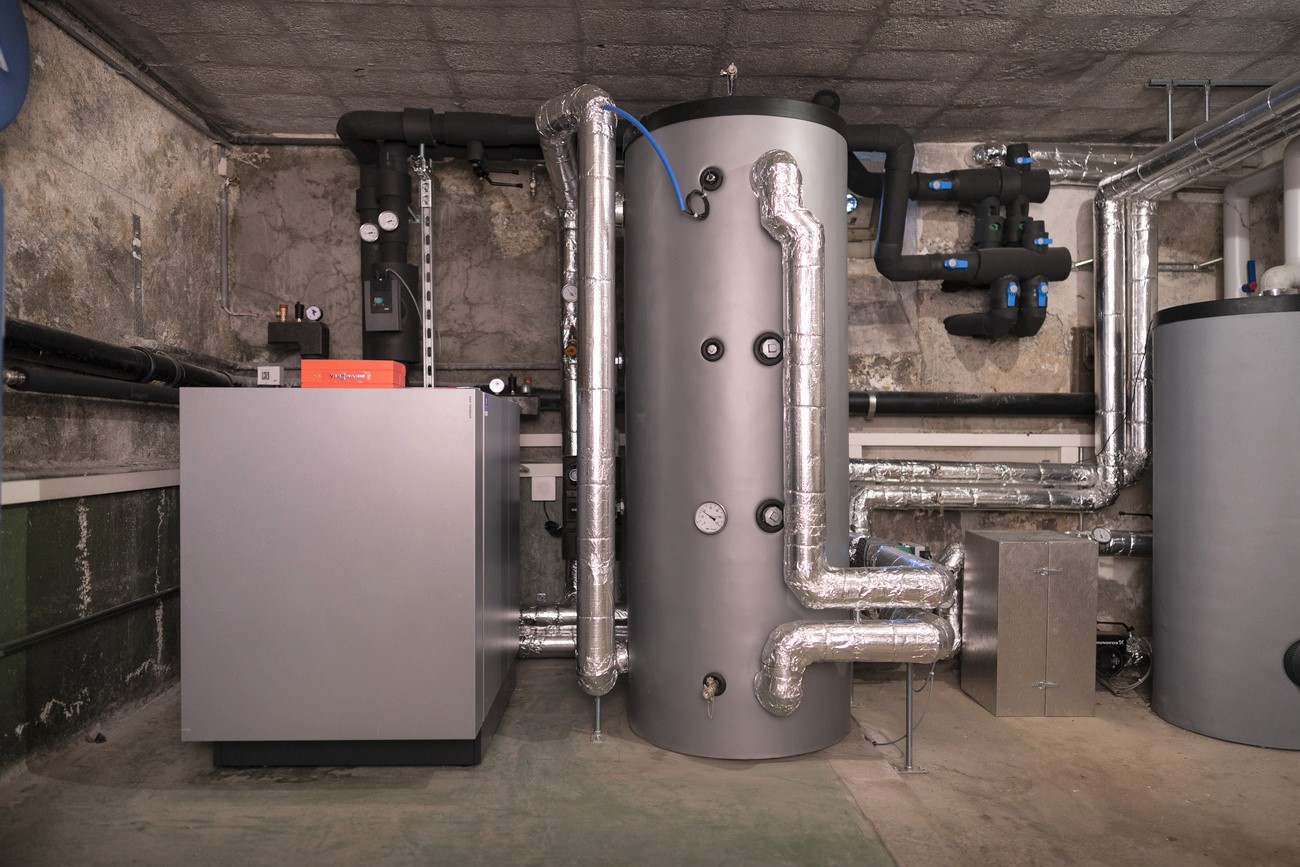
Can heat pumps solve the climate crisis? Can they also cripple the Russian economy?

Heat pumps are seen as central to reducing CO2 emissions. They could also reduce Europe's dependence on Russian gas, argues a US environmentalist. In Switzerland, the heat pump market is growing, slowly.
Late February, just days after Russia had invaded Ukraine, Bill McKibben, an influential American journalist and environmentalist, suggested equipping Europe with heat pumps, a device that extracts heat energy from the air, water or ground and uses it to heat a building. This, McKibben argued, would allow Europe to cut back on its dependency on Russian gas and deal a heavy blow to Russian president Vladimir Putin. Russia earns more than $1 billion a day exporting its oil and gas, much of which goes to Europe, according to Bloomberg calculations.
American companies could step up production of heat pumps, which run on electricity, and export them to Europe, McKibben explained. Potentially, that would electrify some of the 75 million homes in Europe and the United Kingdom that currently depend on Russian gas.
To speed up production, he suggested United States President Joe Biden invoke the Defense Production Act (DPA). This law gives federal agencies the power to exponentially increase the supply of services and materials related to national defense. The DPA had already been used to address the coronavirus pandemic, specifically to increase the production of masks and ventilators.
McKibben’s proposal may seem curious. But it’s not that far-fetched. According to the Washington Post, the White House is seriously considering it. “It’s a solution that could be used in Europe if European leaders decided to cut imports of Russian oil, said three people with knowledge of the matter who spoke on the condition of anonymity to discuss private deliberation”, the newspaper writes.
In reaction to the war in Ukraine, the European Union has announced its intention to end its dependence on fossil fuels imported from Russia. To accomplish this, it will adopt a plan that includes, among other things, substituting gas for heating.
However, the installation of a heat pump does not happen overnight and is often subject to lengthy administrative procedures. While waiting for an eventual decision from the EU on what alternative fuels they will choose, what is certain is that heat pumps can help address another crisis. The climate one.
What is heat pump and how does it work?
A heat pump is a device that extracts heat from the air, water or ground and uses it to heat a building
Like a refrigerator, heat pumps use electricity to transfer heat from a cool space to a warm space. They cool indoor spaces in Summer and warm them in Winter.
Unlike a traditional boiler, a heat pump is not powered by fuel oil or gas, but by electricity. It is therefore considered a sustainable and more efficient solution for heating buildings, provided, of course, that the electricity comes from renewable sources.
Tripling the number of heat pumps by 2030
There were about 177 million heat pumps in operation worldwide at the end of 2020, according to the International Energy Agency (IEA). Half are located in China and North America. Altogether, they cover 7% of global heating needs.
The European countries with the highest percentage of buildings heated with heat pumps are Norway (60%), Sweden (43%) and Finland (41%). In Switzerland, the share (18%) is far lower, but higher than the penetration rate in France, Italy, Germany or Spain.
Heat pumps are among the main solutions to reduce emissions in buildings and achieve climate neutrality, says the IEA. However, their development must be accelerated and the number of devices installed should more than triple by the 2030 horizon, the agency argues.
“Until recently, however, the heat pump market has been growing far more slowly than required in the IEA scenario”, two experts write on the specialized website Carbon Brief. Future evolution, they point out, “will depend strongly on government policies and energy price trends”.
Fossil energy still in two out of three buildings in Switzerland
Nearly two out of three buildings in Switzerland are heated with fossil fuels, according to the most recent data from the Federal Statistical Office, dating back to 2017. Gas heats about one in five homes, and nearly half (43%) is imported from Russia.
Switzerland is among the European countries with the highest percentage consumption of heating oil in homes, and the building sector is responsible for about a quarter of national emissions. Installations of heating pumps could reduce those. But price—CHF 60 000 per pump—and the lengthy energy renovation projects are stalling their rollout.
The trend is changing, albeit slowly. Since 2000, Switzerland is increasing installation, especially in new residential units
“The percentage of buildings with heat pumps has probably increased in recent years, but we don’t have detailed figures,” Sabine Hirsbrunner, communications manager for the federal government’s Buildings Program, tells SWI swissinfo.ch.
The most up-to-date figures are those of the Swiss Heat Pump Professional Association, which reported a 20% increase in the number of installed devices in 2021, in line with the international trend. Last year, heat pumps accounted for more than half of the heating systems sold in Switzerland.
The example of Glarus and Zurich
In Switzerland, there is no blanket ban on the installation of oil or gas heating systems in new buildings. To promote the use of more environmentally friendly heating systems, the state offers financial incentives at the time of construction or renovation.
Switzerland also has one of the highest tax incentive on fossil fuels in the world. At the beginning of 2022, the rate on CO2 generated by diesel and gas increased from CHF96 to CHF120 per ton.
“In the sector in which it is applied, namely fossil fuels for heat production, the CO2 tax has proven effective,” according to Philippe Thalmann, professor of environmental economics at the Swiss Federal Institute of Technology in Lausanne. Indeed, building sector Switzerland has recorded the sharpest reduction in emissions since 1990.
In recent months, some cantons have opted for stricter regulations than those in force at national level, introducing partial bans on heating by gas or oil. The most restrictive energy laws were adopted in Zurich and Glarus by popular vote. At the end of their lifecycle, fossil fuel-fired boilers must be replaced with sustainable and climate-neutral alternatives, state the laws
This will not be enough to end Switzerland’s dependence on Russian gas and fossil fuel imports, and might have little effect on Russia’s oil and gas revenues. But it does represent one more step toward a carbon-free society.
Oil-fired boilers have been declining for several years in Switzerland, and since 2010 about 2%of installations (a total 100,000 boilers ) have been replaced by other systems, according to a UBS bank report published in late January. In contrast, gas boilers have increased by about 30,000.
Government incentives to replace fossil fuel heating systems are too low, UBS argues. At the current rate, it adds, Switzerland is unlikely to meet its emission reduction targets by 2030. Under the Paris Agreement, Switzerland is committed to reducing greenhouse gas emissions by at least 50 % compared with the 1990 level by 2030.

In compliance with the JTI standards
More: SWI swissinfo.ch certified by the Journalism Trust Initiative






























You can find an overview of ongoing debates with our journalists here . Please join us!
If you want to start a conversation about a topic raised in this article or want to report factual errors, email us at english@swissinfo.ch.